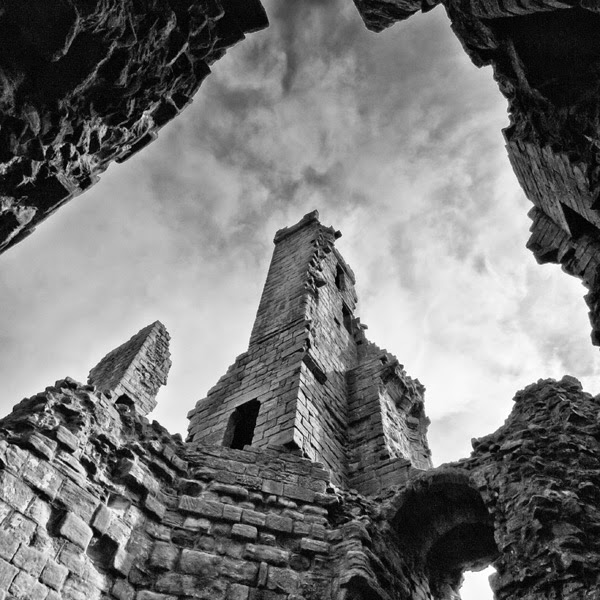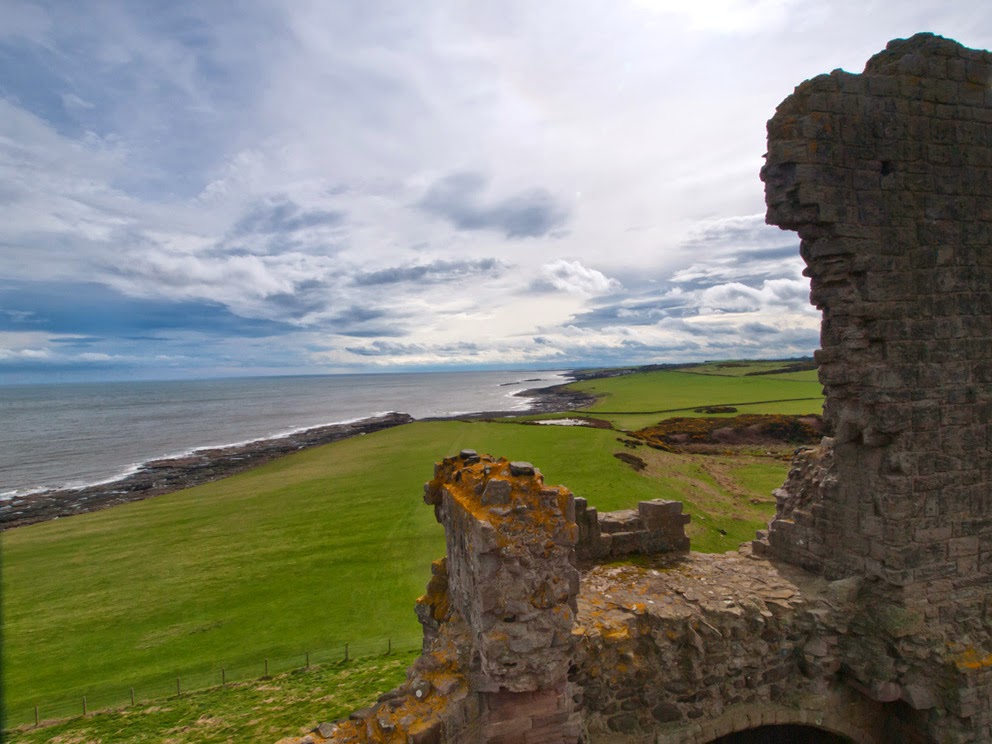The first barons of Prudhoe came from the Umfraville
family. Robert d’Umfraville was one of
the nine barons of Northumberland, who in 1095, were granted permission to
build a castle. Prudhoe castle became
part of a chain of strongholds controlling a main river crossing.
In 1139, the titles of earl of Northumberland and Cumberland
were granted to the Scottish kings as a means of maintaining peace along the
Anglo Scottish border. This lead to the
inter marriage of Northumbrian barons and Scottish royalty. Odinel d’Umfraville was brought up in the
Scottish royal courts, but when Henry II reclaimed the Northumbrian earldom’s,
Odinel kept loyal to Henry. This
infuriated the Scottish king William the Lion, who twice laid siege to Prudhoe
for revenge. However, William was
captured at a battle near Alnwick and Odinel was sufficiently rewarded so he
could continue building his castle. William
the Lion was taken before Henry II, who had him imprisoned in Normandy whilst a
ransom was agreed. The ransom price
included handing over the Scottish castles to Henry and English control and
William had to pay homage to the king until Henry’s death in 1189
Odinel’s son Gilbert married Matilda, the heir to the
Scottish earldom of Angus, and they kept the titles until 1350. In 1294, Gilbert d’Umfraville, the seventh
earl of Angus, asserted his rights to administer punishment in Prudhoe through
the gallows, the tumbrel (cart carrying prisoners) and the pillory.
In 1296 Edward I broke the peace by leading an army in to
Scotland and started 300 years of war between the two countries. In 1316, Scottish prisoners of war were held at
Prudhoe whilst waiting for their families to pay ransom.
During the 14th Century the Percy family began to
acquire lands and power. Henry Percy was
created the first earl of Northumberland by Richard II. He struck a deal with Gilbert Umfraville III,
ninth earl of Angus, for the purchase of the Umfraville lands when Gilbert
died. Henry gained the barony of Prudhoe
and married Gilberts widow, Matilda Lucy, who was an heiress of considerable
wealth.
The earl and his son, Harry Hotspur, rebelled against Henry
IV in 1403. Harry Hotspur was killed in
battle but Northumberland rebelled for a second time. The king decided to give the barony to his brother
John, Duke of Lancaster.
In 1603, James IV of Scotland inherited the English throne
and Prudhoe Castle lost its defensive role.
Eventually the administration of Prudhoe transferred to Alnwick castle,
back to the Percy’s. Hugh Percy, second
Duke of Northumberland, gave the castle a new lease of life through a programme
of restoration in the early 19th Century.


















































